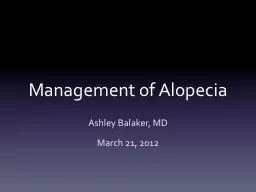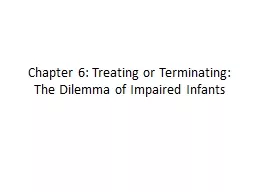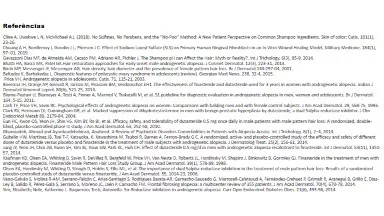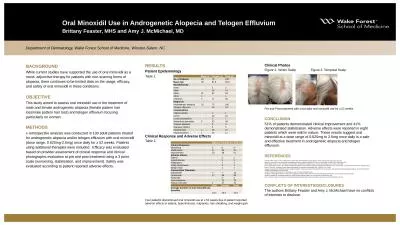PPT-Management of Alopecia Ashley Balaker, MD
Author : mackenzie | Published Date : 2022-05-31
March 21 2012 Causes of Alopecia Burns Traction Dermatitis Autoimmune disease Neoplasm Radiation Chemotherapy Androgenic alopecia most common in men and women Androgenic
Presentation Embed Code
Download Presentation
Download Presentation The PPT/PDF document "Management of Alopecia Ashley Balaker, ..." is the property of its rightful owner. Permission is granted to download and print the materials on this website for personal, non-commercial use only, and to display it on your personal computer provided you do not modify the materials and that you retain all copyright notices contained in the materials. By downloading content from our website, you accept the terms of this agreement.
Management of Alopecia Ashley Balaker, MD: Transcript
Download Rules Of Document
"Management of Alopecia Ashley Balaker, MD"The content belongs to its owner. You may download and print it for personal use, without modification, and keep all copyright notices. By downloading, you agree to these terms.
Related Documents














